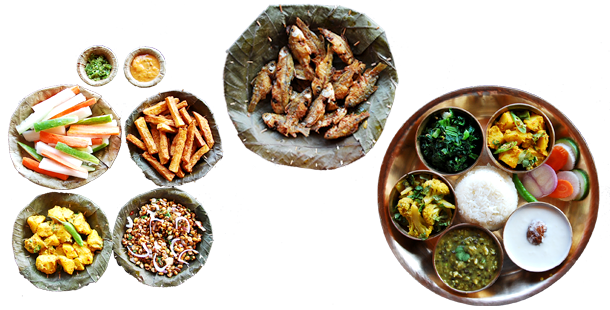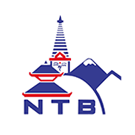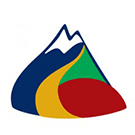Nepal is a land of ethnic diversity. More than 125 recorded ethnic groups live in Nepal. All these ethnic groups have their distinct customs, traditions and cuisines. The variety of food all differs from ethnic group to ethnic group. The Newar group has their separate foods and traditions which circles primarily around buffalo meat and Aila (homemade alcohol), while Bramhins are worshippers and don’t have meat related products in their cuisine. All these 125 or more divergent ethnic groups proud themselves in their unique foods and cuisines.
In your visit to Nepal, it might not be possible to try the cuisines of all ethnic groups. But you surely can taste some of the most widespread and loved cuisines of Nepal.
Most Widespread Cuisines of Nepal
Newari Cuisine
Newars are the indigenous people of Kathmandu. They cater the best cuisine in Nepal. Their widely popular dishes come from Buffalo. Every part of a buffalo constitutes a separate and delicious dish. Some of the dishes are Kachilaa (raw marinated minced meat), Takhaa (jellied soup), Hakuchoila (grounded spiced and broiled meat), Bhuttan (deep fried intestine and gut), Nhe pure (soup made from the brain of buffalo) and so on.
Newars also have appetizing vegetarian dishes. Kwati, Wo, Chatamari, Yomari, and Bara are the most popular vegetarian dishes even though they can also be prepared by stuffing meat in them. Newari desert consists of Yoghurt, fruits, and sweets. Spicy pickles are also widely preferred in Newari cuisines.
Newars are very religious and cultural people. Their tradition teaches to offer meat and alcohol products and be consumed as gods Prasada. Homemade alcohol called Aila and Thwon are prepared especially during festive season and celebration. Nowadays many Newari food theme restaurants have opened in Kathmandu Valley that offers traditional Newari cuisines.
Lohorung Cuisine
Lohorung are ethnic groups indigenous to eastern Nepal. They originate in Sankhuwasabha and have resided in neighboring districts. They belong to the Kiranti group of Sino-Tibetan languages. Lohorung has varieties of dishes made from local ingredients. The most famous food item of Lohorung is Tongba. Tongba is a millet-based alcohol beverage. It originated from eastern Nepal and spread all over Nepal and also to Darjeeling and Sikkim. Millet is fermented and put in a container. Then hot water is pour over and drank until the alcohol stops oozing from the millet. Some of the other popular Nepali cuisines of Lohorung are Wachipa, Wamik, Masikdaam, Kinima, Sibring, Bawari, Yangden, Dipu and so on.
Terai Cuisine
Terai region food center over Maithali cuisine, Tharu cuisine, and Bhojpuri cuisine. People of Terai are sweet dish lovers. They have varieties of sweet dishes like Jalebi, Lalmohan, Rasbari and other sweets items. The savory dish of Terai circles over vegetables locally produced. The curry is very widely eaten in Terai. Some vegetable used to make curry are Cauliflower, eggplant, cabbage and green beans. Tharus are fishers and eat freshwater crab dishes, prawns, snails and fish. The Tharus are excellent fish curry cooks. You will taste the best Nepali cuisine related to fish in the Terai region of Nepal.
Tibetan Cuisine
Nepalese cuisine in the northern region follows a remarkable similarity to the Tibetan cuisine. Some of the most notable food items of Tibetan ethnicity are noodles, yak cheese, dumplings (Mo Mo), Tibetan bread, goat and yak meat dishes, Sherpa stew and so on.
Tsampa, flour milled from barley is the staple food of northerner Nepal. Sha Phaley (meat and cabbage in bread) is also eaten in a wide scale here. Thukpa (a noodle soup with vegetables) is also eaten all over Nepal. Some Tibetan cuisines like Mo Mo and Thukpa have gained popularity all over Nepal and among people of Sikkim and Darjeeling too.
Gurung Cuisine
The main Nepali cuisine Dhido comes from the Gurung cuisine. Dhido is the most traditional food of the Nepalese people. Dhido is prepared from either buckwheat or millet flour. Several people eat dhido as per their taste and preferences. The traditional side dish for Dhido is Gundruk, (fermented leafy green curry which is used as a pickle too). People also eat dhido with vegetable curries, pickles, yogurt, and rotis. Current widespread side dish for dhido is meat, either mutton or chicken.
Gundruk is the second major component of Gurung cuisine. Gundruk is the traditional curry of Nepali cuisine. People either make gundruk as a curry by adding in potatoes and other spices or make it as a pickle by mixing gundruk with onions, chilly and other pickled items. Another dish from the Gurung community is eaten all over Nepal is Sel roti. Sel roti is a type of snack food; which is round shaped and made from rice flour. Sel roti is made on special occasions like Dashain, Tihar and other major festivals and occasions. The batter made from mixing flour, ghee, and sugar is fried in oil until it turns red and becomes crispy on the outside. Another brilliant Nepali cuisine from the Gurung house is Kodo ko Raksi. It is alcohol made from Kodo and is also the most traditional alcohol beverage of Nepali cuisine. The liquor is made from rice and millet. It is in the Gurung culture to drink Kodo Ko Raksi in religious festivals and family events.
These are some of the most predominant ethnic groups whose food items are dominant in Nepal. Make sure during your visit to Nepal that you try every cuisine mention above. These are the signature dishes that define the people and their food.
Foods of Nepali Cuisine
Nepalese people love timely snacks and in time have preferred some foods over others. Some of the foods of Nepali cuisine you can try in Nepal are:
MoMo
When you walk any streets in any part of town or city, the smell of fresh steamed Momo fills the streets. Momo is the most eaten snack in Nepal. Every street has a momo shop selling different varieties of momo.
Momo is a sister dish of Tibetan dumplings but bit smaller, spicier and tastier. Momo is round substance covered with flour on the outside and filled with filling in the inside. The fillings are of several types ranging from vegetables, mutton, buff, chicken, bananas, paneer and any other substance people come up with.
Momos can be found in tiny huts in the corner of the street to even five-star hotels. The taste, presentation, and side achaar (pickle) or soup will vary from place to place. Undoubtedly, Momos are the most enjoyed dish among Nepalese cuisine.
Chowmein
Chowmein is another adapted form of Tibetan noodles. The noodles are boiled in hot water drained and fried with vegetables and sauce. Chowmein is the second most eaten snack in Nepal. Chowmein also comes in different variations like that of Momos.
Dal-Bhat

Apart from aforementioned dishes, there are still innumerable varieties of dishes found in Nepal. If you wish to visit Nepal and explore all the ethnic dishes and get to know people through their food, surely once is not enough. The Nepali cuisines reflect the cultural and ethnic diversity unified by widespread and appreciated food cultures all over Nepal. Indeed, Nepali cuisine is still very mysterious and not explored to the fullest extent. You can visit Nepal and explore the hidden secrets and foods in the ethnic settlements all over Nepal.
For further information regarding Nepali Cuisines and your trip to Nepal, you can check out our website. If you have any queries and require additional information about our past works, our experience in the field, customer satisfaction, and any other details feel free to contact from our website contact page.
Check additional pages and information regarding other travel and tour destinations in Nepal in our blog here.














